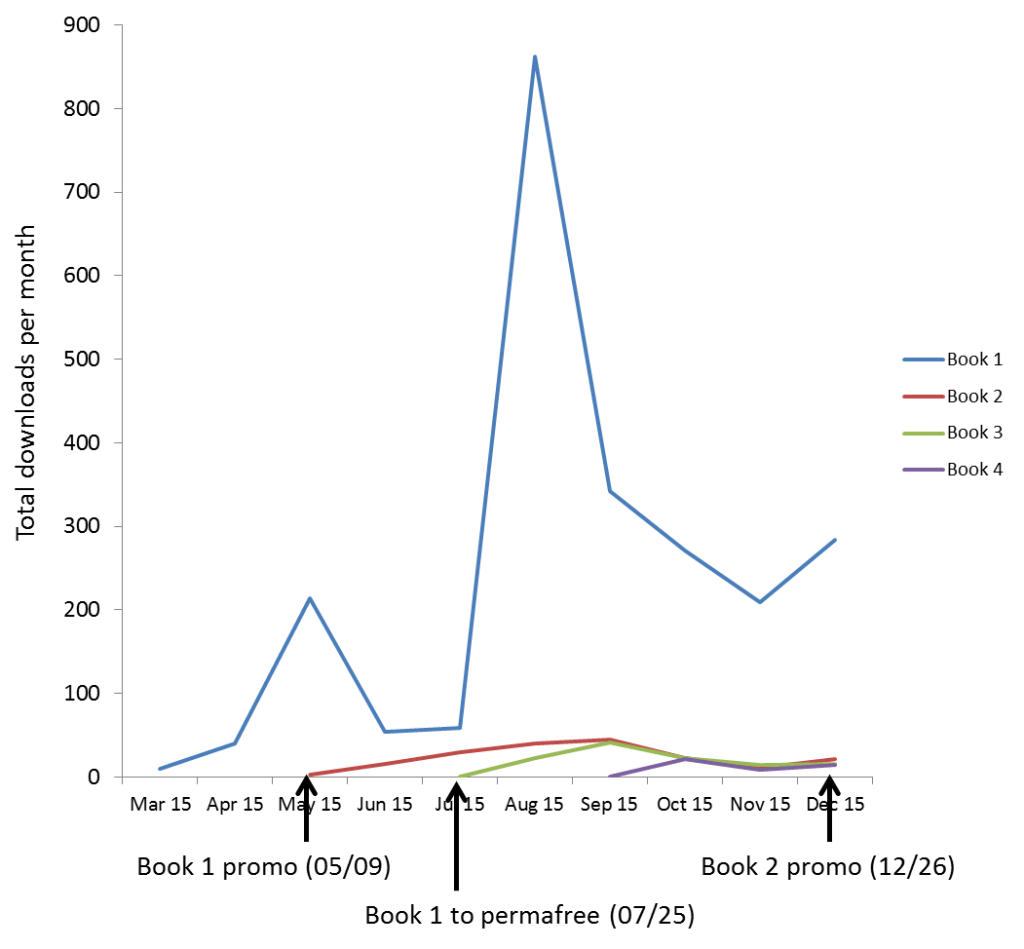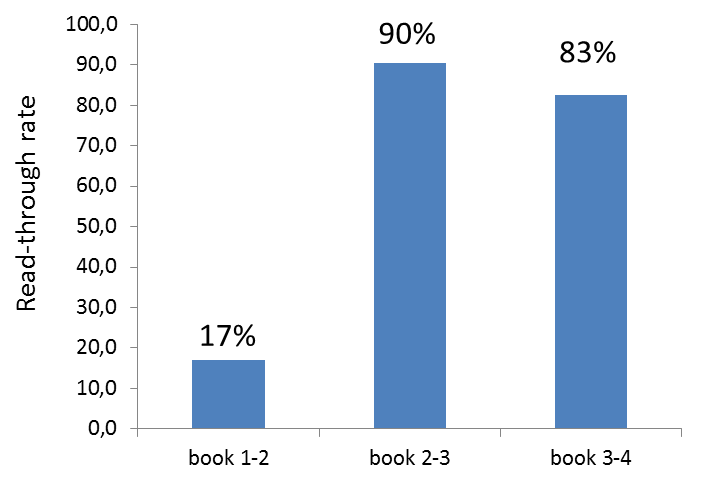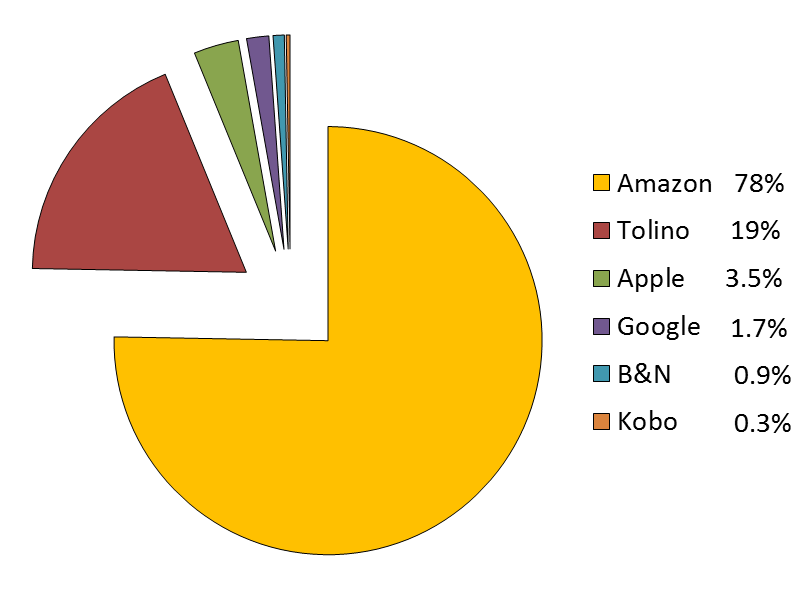Potential for Self-Published Middle Grade Fiction in Germany (2015)
It’s been a year since I started translating Middle Grade fiction on Babelcube (the first book was published on January 13, 2015 – check out this post on my general experiences and why I chose MG). I was just going through the sales numbers in my spreadsheets to prepare an end-of-the-year evaluation (I used to be a scientist, it’s kinda in my nature) and I thought the results might be interesting to other authors and translators out there, whether you are using Babelcube or not, as they show:–Sales potential of self-published Middle Grade fiction in Germany (right now)
–Long term sales of a series with first book permafree
–Sales on different platforms
1) Sales/Downloads of the Middle Grade series “Julia Jones’ Diary” Book 1 – 4 from March to December 2015:
In the graph above, I included total (paid) sales numbers for Books 1-4 as well as total (free) downloads for Book 1 after it was set to permafree. The graph looks sort of jagged because I only had monthly data instead of daily sales (I could have listed daily sales but because I’d have to transfer the numbers manually from my Babelcube dashboard to Excel, I chose not to do that).
Sales started out slow when the first book of the series was released on March 7 and steadily increased during the following two months with a peak in May. This peak was most likely the result of a promo run for Book 1 for a two-day 99-cent-discount. I used the free Facebook service Ebook Topdeals for that promo. Interestingly, this promo seems to have led to an increased number of downloads for two other books I translated that aren’t part of the series, but appear in the Also-Boughts of Julia Jones (Diary of Mr. TDH, published in January, and Diary of an Almost Cool Girl 2, published in February).
After release of Book 3 in July, we set the first book to permafree at the end of the month and saw the expected jump in free downloads in August, after which they dropped again (also normal). This did seem to lead to an increase in sales in the other books in the series with a bit of a delay. Downloads across all books then decreased in the following months, but picked up again in December. As December is usually a good month for book sales, this isn’t too much of a surprise. We also published Book 5 of the series in December (not shown here) and did another discount promo, this time for Book 2 (December 24-31) using Ebook-Rabatte. (For more possible ebook promo sites, see this post and the spreadsheet in the Resources)
2) Read-through rates in series:
These numbers are pretty similar to what I’ve heard other authors report. 17% read-through from Book 1 to Book 2 is pretty good, especially since the first book is permafree and many download free books without ever reading them.
3) Sales across platforms:
This is the average from the sales numbers of six published books from February till December 2015. As expected, Amazon held the lion’s share with almost 80%, even though Tolino has about 50% of the ebook market share in Germany. This is not unusual for German indie authors and it’s probably because of improved visibility on Amazon compared to other stores (my guess only). Still, Tolino did provide 19% of downloads/sales, which certainly can’t be discounted. So, in the long run, I do think publishing on Tolino (and the other platforms) is worth it, but it may also depend on the genre.
Sometime last year, Babelcube started creating paperback versions via CreateSpace. So far, the paperback sales aren’t great in any way compared to the digital sales (maybe 1-2 a month if any), even though I would have assumed Middle Grade readers still read more real books than digital (but maybe times are changing here, too).
Conclusion:
Selling Middle Grade fiction as an indie author doesn’t necessarily make you rich (no surprise there) – I think these sales numbers are probably pale compared to romance, for instance. But maybe the market will grow in the coming years as more kids get devices on which they can read digital books. The data also showed me that it’s essential to keep doing promotions in order to get a boost in visibility even if you do publish regularly, and that sales on other platforms besides Amazon can add up. (However, KDP Select also has its advantages, particularly in the beginning, as you can read here.)





